Immerse in Cebu City’s history for half a day
CEBU CITY—Learning about Cebu’s history in just half a day is like a walk in the park—literally.
Tourists can just walk around downtown Cebu City to catch a glimpse of its history through the local government’s “Heritage Walk” project.
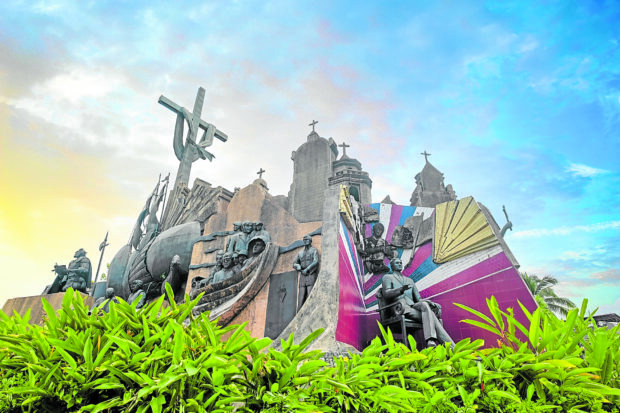
Cebu City mounted a “HeritageWalk” project for locals and tourists to have a better understanding of the Queen City of the South. —CONTRIBUTED PHOTO
The downtown area is a heritage belt of old churches, houses and structures that date back to the colonial Spanish past spanning 333 years. These sites are within walking distance from each other and tourists can either get a licensed tour guide or visit on their own.
A heritage walk may start at Fort San Pedro near the waterfront area, a military defense structure that was built by Spanish and indigenous Cebuano workers under the command of Spanish conquistador Miguel Lopez de Legazpi.
The smallest but oldest triangular bastion fort in the country was constructed on May 8, 1565, which later turned out to be a refuge for Filipino revolutionaries near the end of the 19th century.
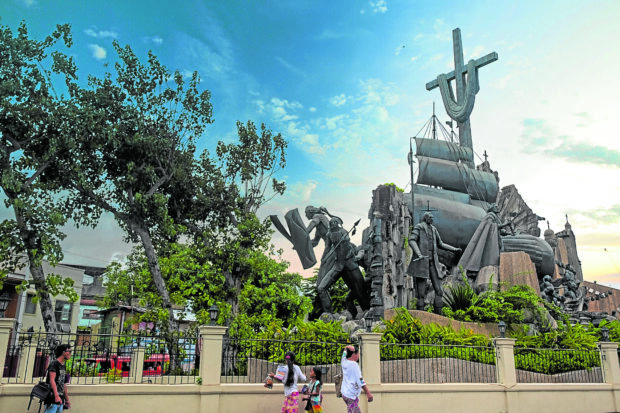
The Heritage of Cebu Monument stands out amid the urban sprawl.
Adjacent to it is Plaza Independencia, which was built by the Spaniards in early 1600 to be used as a military training and parade ground. Its name was changed to Plaza Libertad when the Americans took over to signify its freedom from the Spanish colonizers. When the Americans left, it was changed to Plaza Independencia to symbolize Cebu’s freedom from all its colonizers.
Article continues after this advertisementMagellan’s cross
Article continues after this advertisementAbout 200 meters away from Plaza Independencia is another park known as Plaza Sugbo, an open space between Cebu City Hall and the kiosk that houses the Magellan’s Cross, which was planted by Portuguese explorer Ferdinand Magellan and Spanish soldiers in 1521.
The original cross was encased inside a huge wooden cross that visitors view. Authorities wanted to protect the historical cross from people who would chip away parts of the cross as souvenir or in the belief that it possessed miraculous powers.
The ceiling of the Magellan’s Cross is decorated with murals that depict Cebu’s conversion to Christianity.
Fronting the kiosk is the centuries-old Basilica Minore del Sto. Niño, which houses the image of the Holy Child Jesus, the oldest in the country. The image was given as baptismal gift by Magellan to Cebu’s Queen Juana in 1521.
The basilica, which was built on the site where the image of the Sto. Niño was found in 1565, also displays numerous historical icons and items.
A block away from the basilica is the Cebu Metropolitan Cathedral, which serves as the ecclesiastical seat of the Archdiocese of Cebu. Like the basilica, the cathedral also has a museum located in another building near the church that contains church artifacts, including images of saints and liturgical vestments.
Just across the Cathedral Museum is Plaza Hamabar where the statue of Rajah Humabon is placed on a pedestal. Humabon, the husband of Juana, was the first chieftain to embrace Christianity in the Philippines.
Important houses
About 200 meters away from Plaza Hamabar is Colon Street (Calle Colon), the oldest thoroughfare in the country, which is bustling with activities due to numerous shops, cinemas and vendors.
Further down Calle Colon is the Parian district, which used to be home to Cebu’s most prominent families in the Spanish period and center of trade between the locals, Chinese and Spanish.
Found in Parian is the Heritage of Cebu Monument, a tableau that showcases Cebu’s colorful past — from the pre-hispanic days to World War II. The giant images are sculpted in brass and concrete.
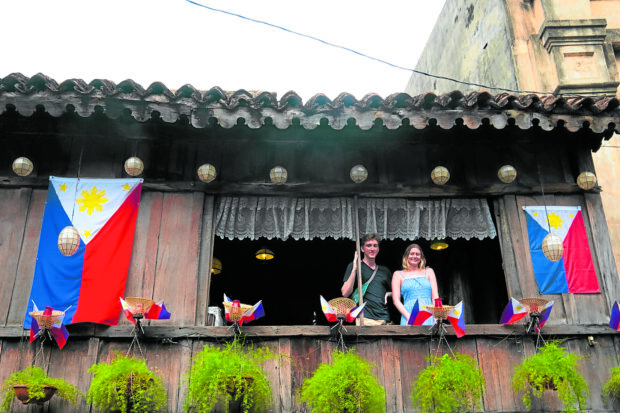
Yap-Sandiego Ancestral house is ready to welcome visitors.
Just across the Heritage Monument of Cebu is the Yap-Sandiego Ancestral House, one of the oldest residential houses in the country.
Locals refer to this structure as “Balay nga Bato ug Kahoy” (House of stone and wood) since it was made of coral stones, “balayong” (a native black wood) and “tugas” (molave). Red clay tiles called “tisa” were used as the house’s roof, while a mixture with egg whites glued the pieces together.
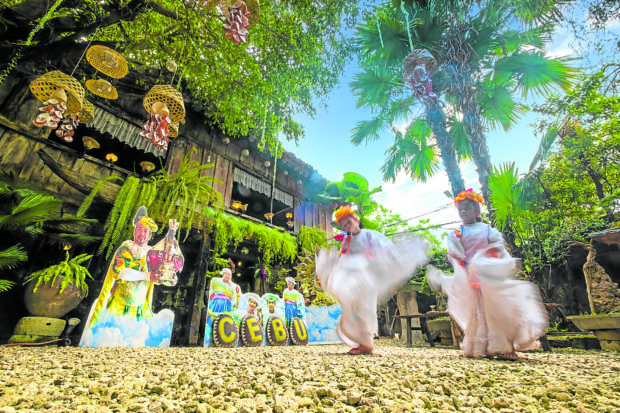
The Yap-Sandiego Ancestral house is one of the oldest in the country.
Chinese merchant Don Juan Yap and his wife, Doña Maria Florido, constructed the house between 1675 and 1700. At present, the ancestral house is under the supervision of Doña Maria’s great great grandson, Val Mancao Sandiego, and his wife Ofelia. The house has been preserved and converted into a museum.
Inside the Yap-Sandiego Ancestral House are old religious icons, fine dining sets, an old birthing chair, and antique furniture. It also has several altars — a testament of the religiosity of many Cebuano families.
Outside the house is a mini-garden with a 14-foot deep freshwater well. The garden is adorned with plants, jars, and chairs.
Just a few steps away from this ancestral house is another historical treasure that is hidden in plain sight.
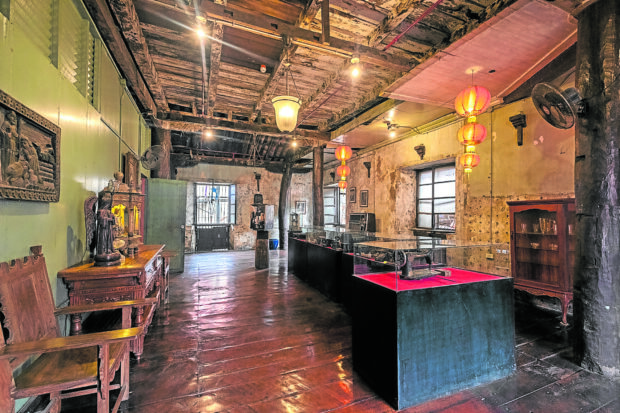
The Jesuit House became the headquarters of the Japa- nese military during World War II.
On the outside, it appears like a warehouse but when one takes a closer look, one can find a sign beside the door that reads: 1730 Jesuit House.
The “warehouse” is one of Cebu’s oldest houses that used to be the home of the vice provincial of the Society of Jesus or the Jesuits, a religious order of the Catholic Church.
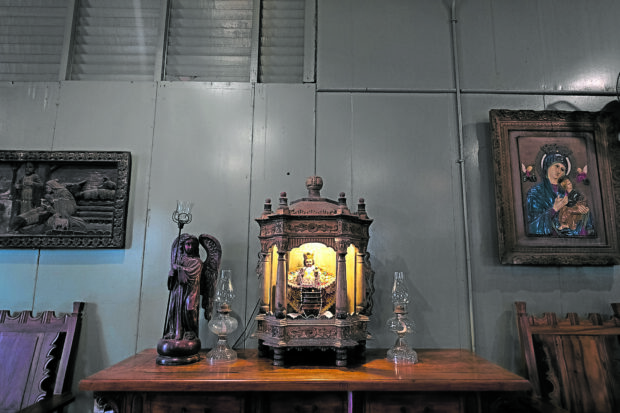
Inside of the Jesuit house
It later became the headquarters of the Japanese military during World War II, and a private nightclub in the 1950s. It was eventually used as a hospital by the Americans, and became the residence of the Alvarez family before this was sold to Nicanor Sy in the mid-1960s.
Sy converted the premises into the Ho Tong warehouse. For about 40 years, the Jesuit House took on the guise of a bodega. In 2009, the present owners converted it into a museum.
The house is made up of a bigger main structure consisting of two stories and another smaller one also with two floors. Both are connected by a covered walkway or bridge.
The bigger structure is made up of hewn stones and still possesses the original clay tile roof with a pagoda-like design which was inspired by the Chinese culture that used to flourish in the area before.
The smaller structure, on the other hand, has two corresponding parts: a hewn stone in the first level and hardwood in the second.
More than malls
Unlike the 1730 Jesuit House which was unknown to many for years, Casa Gorordo, another heritage house in the Parian district, has been a popular tourist attraction in Cebu.
The old house on Lopez Jaena Street, was built in the 1800s by Alejandro Reynes y Rosales. It was bought by Spanish merchant Juan Isidro de Gorordo in 1863.
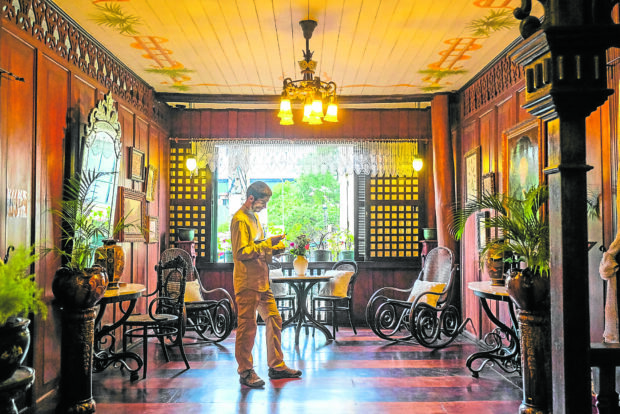
Inside Casa Gorordo
Four generations of the Gorordo family lived in this house, including Bishop Juan Gorordo, the first Filipino bishop of Cebu.
The lower portion of the old house structure is supported by massive stone walls which are good protection from fire and typhoons. Huge posts of molave also extend from the basement to support its clay tile roof.
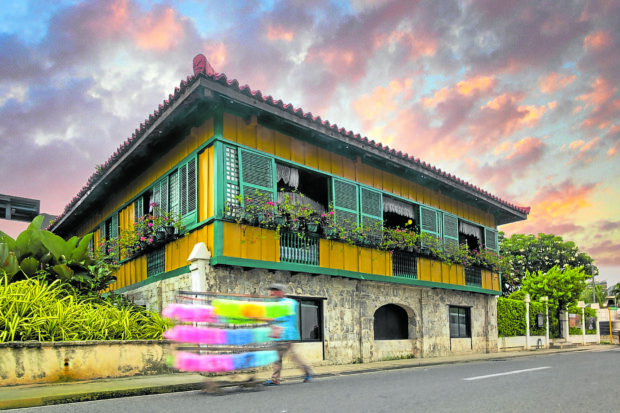
Casa Gorordo
Inside the house are a variety of paintings, religious icons, and furniture dating several years back.
Casa Gorordo was renovated in 1980 after it was acquired by the Ramon Aboitiz Foundation Inc. (RAFI). The house, which was turned into a museum, was opened to the public in 1983.
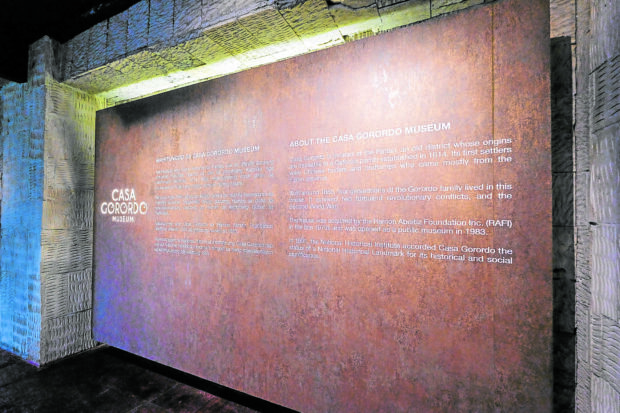
Casa Gorordo was renovated in 1980 after it was acquired by the Ramon Aboitiz Foundation Inc
In 1991, the National Historical Institute (NHI) declared the Casa Gorordo Museum a National Historical Landmark.
Cebuano heritage advocate Jocelyn Gerra reminds tourists that there is more to Cebu City than its sprawling shopping malls.
“We have a culture and a proud history which needs to be taken care of as time progresses. Tourists would miss a lot if they confine themselves inside the malls,” said Gerra, a professor of the Department of Anthropology and Sociology at the University of San Carlos. INQ